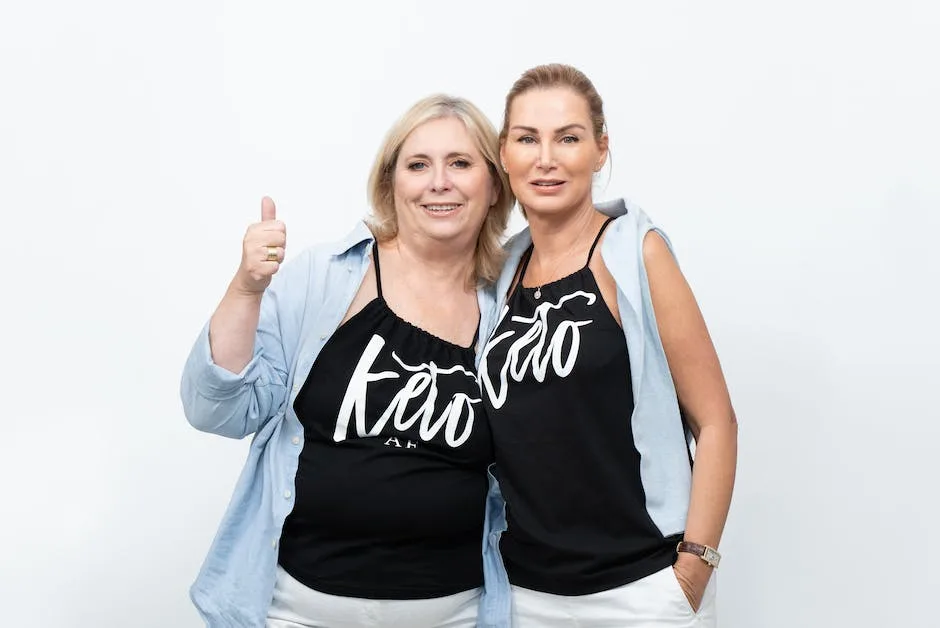Unlocking the Secrets of the Blue Zones
An Introduction to the Fascinating Blue Zones Around the World
The legendary Blue Zones, 5 regions across the globe with the highest concentrations of centenarians, offer profound insights into the lifestyle factors that contribute to longevity, vitality, and happiness in one’s later years. These remarkable longevity hotspots – Okinawa in Japan, Sardinia in Italy, Nicoya Peninsula in Costa Rica, Icaria in Greece, and Loma Linda in California – provide a blueprint for healthy aging that anyone can integrate into their lives.
In this comprehensive, 4-part guide, we will dive deep into the secrets of the Blue Zones and how to harness their wisdom to craft a lifestyle that promotes wellbeing and fulfillment.
Okinawa, Japan: The Island of Longevity
Okinawa, a radiant island in southern Japan, is renowned as a Japanese Blue Zone and home to one of the world’s highest concentrations of centenarians. The roots of exceptional longevity in Okinawa lie in its unique diet, daily routines, social ties, attitude towards life, and sense of purpose.
The Cornerstones of the Okinawan Lifestyle
- A Plant-Based Diet Rich in Vegetables, Sweet Potatoes, and Seafood: The traditional Okinawan diet is anchored by fresh vegetables, sweet potatoes, soy foods like tofu, seaweed, turmeric, green tea, and modest amounts of seafood. This nourishing diet delivers a wealth of vitamins, minerals, antioxidants, and anti-inflammatory compounds.
- Active Daily Routines: Okinawans maintain an active lifestyle, incorporating physical activity into daily routines through gardening, walking, tai chi, and dancing. This constant gentle movement keeps their bodies and minds nimble.
- Close-Knit Social Circles: Okinawans cultivate close social ties across generations, fostering a powerful sense of community and belonging. These bonds provide meaning, joy, and support.
- An Age-Positive Outlook: Elders are revered in Okinawan culture for their wisdom and experience. This positive perspective on aging may contribute to Okinawans’ zest for life.
- Ikigai – A Reason to Live: Having an ikigai, or sense of purpose, is integral to the Okinawan lifestyle. Pursuing small daily goals and passions imbues life with meaning.
The Okinawan blueprint for longevity spotlights the holistic interplay between nutrition, physical activity, social ties, mental outlook, and purpose – themes that resonate across all Blue Zones.
Sardinia, Italy: The Mediterranean Island With a High Density of Male Centenarians
The gorgeous Italian island of Sardinia harbors one of the world’s highest concentrations of male centenarians. Sardinia’s extraordinary longevity statistics are a product of its Mediterranean cuisine, active lifestyle, importance of family, and sense of belonging to a tight-knit community.
Pillars of the Long-Lived Sardinian Lifestyle
- Mediterranean Diet: Sardinians follow a Mediterranean-style diet emphasizing fruits, vegetables, whole grains, olive oil, legumes, nuts, fish, and moderate amounts of goat’s milk/cheese. This diet delivers an abundance of antioxidants and healthy fats.
- Constant Motion: Sardinian elders are constantly active – walking, gardening, and pursuing hobbies like hunting and fishing keep them robust.
- Family First: Sardinian families are close-knit social units where elders are respected. These familial bonds provide meaning and support.
- Village Life: Sardinian villages foster tight communal ties. Being part of a network of friends and neighbors strengthens bonds and purpose.
Like other Blue Zones, Sardinia reveals that longevity isn’t just about diet, but weaving nutrition, activity, relationships, and community into one’s lifestyle tapestry.
Nicoya Peninsula, Costa Rica: Simplicity, Community, and Fresh Food
Costa Rica’s scenic Nicoya Peninsula is an iconic Blue Zone where residents lead active, purposeful lives and commonly live into their 90s and 100s. The Nicoyan lifestyle highlights the role of simplicity, social ties, and locally sourced foods in longevity.
Highlights of Life in Nicoya
- Basic and Natural: Nicoyans lead simple, grounded lives focused on family, community, and nature rather than material possessions.
- Tightly Knit Community: Nicoyans have strong social and family networks that provide support and purpose.
- Gardening and Fresh Food: Gardening is a communal activity, and Nicoyans eat fresh, non-processed foods from these gardens.
- Physical Activity: Nicoyans stay active into old age with outdoor activities like walking, gardening, and light farming.
- Faith and Family: Nicoyans draw meaning from faith, family traditions, and community. These connections help sustain a positive mindset.
The Nicoyan Blue Zone demonstrates that longevity isn’t reliant on modern conveniences – but on leveraging simplicity, social bonds, natural foods, activity, and purpose.
The Key Themes and Lifestyle Factors Uniting the Blue Zones
While each Blue Zone is unique, several unifying themes and lifestyle factors emerge across these regions that contribute to wellbeing, healthy aging, and longevity:
- A predominantly plant-based diet rich in fruits, vegetables, legumes, whole grains and nuts delivers vitamins, minerals, antioxidants and healthy fats.
- Physical activity integrated into daily routines keeps the body and mind active.
- Social engagement fosters bonds that provide joy, support and sense of purpose.
- An active community life strengthens a sense of belonging.
- Maintaining an age-positive perspective and sense of purpose/ikigai cultivates motivation and zest for life.
This first part has explored the big picture themes and lifestyle factors uniting the Blue Zones. Up next, we’ll do a deep dive into the diet and nutrition patterns of the Blue Zones.

Harnessing the Longevity Power of the Blue Zones Diet
Earlier on, we uncovered the high-level themes linking the world’s Blue Zones – regions with remarkable longevity statistics and a high density of healthy centenarians. A predominantly plant-based diet was one of the key unifying factors.
Now, we’ll explore the signature elements of the traditional Blue Zones diet and nutrition patterns. Understanding these provide a blueprint for eating in a way that fuels longevity, energy, and wellbeing. Let’s dive in:
Vegetables, Fruits and Greens – The Foundation of the Blue Zones Diet
Across the Blue Zones, diets are anchored by an abundance of vegetables, greens, fruits, and fresh herbs. Okinawans build meals around sweet potatoes, bitter melon, seaweed, turmeric and mugwort. Sardinian menus spotlight fennel, wild greens, artichokes, fava beans, tomatoes and figs. Fresh vegetables, tropical fruits and maize define Nicoyan meals. Icarians enjoy foraged greens and black-eyed peas.
This rainbow of plant foods delivers a bonanza of vitamins, minerals, antioxidants, and anti-inflammatory compounds that likely contribute to longevity. Aim for 7-10 servings of fruits and vegetables daily. The more variety, the better, to maximize nutrient diversity.
Tips for Incorporating More Veggies, Greens and Fruits:
- Make salads and/or roasted/sautéed veggies daily side dishes.
- Snack on fruits and raw veggies.
- Drink green smoothies.
- Add spinach, kale or berries to morning oatmeal.
- Incorporate veggies into every meal – stir fries, omelets, pasta sauce etc.
Whole Grains, Nuts and Legumes
Whole grains like barley, brown rice and quinoa along with beans, lentils and peas are dietary staples in Blue Zones. Okinawans eat soy foods like tofu regularly. Sardinians favor fava beans and chickpeas. Black beans and pejibaye (peach palm fruit) are common in Nicoya. Nuts like almonds and walnuts are enjoyed across the Blue Zones.
These whole plant foods provide proteins, healthy fats, minerals, antioxidants and dietary fiber that support longevity. Aim for at least 3 servings of whole grains and a few servings of nuts, seeds or legumes daily.
Tips for Eating More Whole Grains, Nuts and Legumes:
- Make overnight oats with quinoa flakes or barley.
- Swap white rice for brown or wild rice.
- Sprinkle nuts/seeds onto salads, oatmeal and yogurt.
- Snack on hummus with veggies.
- Add lentils or beans to salads, soups, stews and curry dishes.
Healthy Fats from Plant Sources
While dietary patterns vary between Blue Zones, healthy fats from plant sources are consistently emphasized. Extra-virgin olive oil defines Mediterranean Blue Zone diets. Okinawans get fats from tofu, seeds, sweet potatoes and small fish like sardines. Avocados and nuts/seeds provide healthy fats in Nicoya.
Sources of monounsaturated and omega-3 fats like olive oil, avocados, nuts and seeds have anti-inflammatory properties that may contribute to longevity.
Tips for Incorporating Healthy Fats:
- Use extra-virgin olive oil as your main cooking oil.
- Snack on a handful of unsalted mixed nuts and seeds.
- Top oatmeal, yogurt or salads with chopped avocado.
- Add olive oil, avocado or walnuts to smoothies.
Herbs, Spices, Tea and Wine (in Moderation)
Herbalseasonings and teas are staples of Blue Zone cuisines. Turmeric, mugwort, shiitake mushrooms and green tea are integral to Okinawan cooking. Sardinians flavor food with fennel, garlic, rosemary and cilantro. Nicoyans drink corn-based Pinolillo. Icarians sip antioxidant-rich herbal teas.
Red wine is consumed regularly but in moderation in most Blue Zones. Compounds in tea, herbs and red wine confer antioxidant and anti-inflammatory benefits. But moderation is key, 1-2 servings daily at most.
Tips for Incorporating These Elements:
- Flavor dishes with fresh or dried herbs/spices – turmeric, garlic, rosemary, ginger etc.
- Sip on green, herbal or black tea.
- If you drink alcohol, limit to 1 glass of red wine daily with meals.
- Brew rosemary, chamomile or hibiscus tea.
Only Modest Amounts of Animal Products
Meat and dairy have a minimal presence in traditional Blue Zone diets. Okinawans rarely eat meat or eggs – 1-2 times monthly. Sardinians eat meat sparingly but enjoy goat’s milk/cheese. Nicoyans and Icarians also minimize meat. In the Adventist Blue Zone, vegetarianism is common.
The Blue Zones demonstrate that regular high meat intake isn’t required for longevity. Focus on plant proteins, and limit meat to occasional modest portions – 3-4 ounces a few times weekly.
Tips for Incorporating Meat/Dairy Conscientiously:
- Focus meals around plant proteins like beans, lentils, tofu etc.
- When you eat meat, choose lean cuts in smaller portions.
- Limit dairy intake. When consumed, choose yogurt and small portions of cheese over milk.
- Replace one meal weekly with a vegetarian meal.
Hydration – The Essence of Life
Staying hydrated is elemental across all Blue Zones. Good hydration flushes toxins, energizes muscles, and aids cognitive function. Water is the beverage of choice, along with herbal teas, green tea and coffee (in moderation) in many Blue Zones.
Drink plenty of water throughout the day. Herbal teas and green tea also count towards daily fluid requirements. aim for around 2-3 liters of total fluids daily.
Tips for Staying Hydrated:
- Carry a reusable water bottle and sip throughout the day.
- Set reminders to drink water at intervals.
- Consume water-rich fruits/veggies which contribute to hydration.
- Flavor water with citrus fruits, cucumber, mint etc.
- Drink green tea, herbal tea, or coffee (in moderation).
This section has given you a detailed blueprint for eating the Blue Zones way. Up next, we’ll explore the other vital pillars of the lifestyle – social connectivity, purpose, mindfulness, and an active lifestyle.

Crafting a Longevity Lifestyle: Activity, Community, and Wellbeing the Blue Zones Way
So far we’ve explored the traditional diets and foods integral to Blue Zone regions where remarkable longevity prevails. But food is just one facet of the equation. To unlock the full wisdom of the Blue Zones, we must also integrate their holistic lifestyle practices into our lives.
This section will dive into the other vital pillars that complete the Blue Zones lifestyle mosaic – fostering social bonds, keeping an active lifestyle, cultivating purpose and meaning, and practicing mindfulness. Integrating these elements creates a lifestyle that nourishes body, mind and spirit.
Community and Social Bonds – Our Nutrition for the Soul
Across all Blue Zones, strong social ties and close community bonds are universal. Okinawans have moais – social circles who provide emotional support well into old age. Sardinians live in tightly-knit villages where they enjoy deep friendships. Nicoyans have extensive family support networks. Icarians join religious societies to expand their community.
Daily social interaction seems key. Make nurturing social bonds with friends, family, neighbors, colleagues and community groups a priority. If mobility is limited, maintain contact via phone and video calls. These relationships provide joy, meaning, and a sense of belonging – our nutrition for the soul.
Tips for Cultivating Social Connectivity:
- Organize regular in-person meetings with friends/family for social activities.
- Volunteer at a charity or nonprofit aligned with your values.
- Join a book club, cooking class, community choir or other group activities.
- If mobility is limited, schedule regular video calls to stay connected.
- Make conversing with people part of your daily routine – chat with neighbors, store owners etc.
An Active Lifestyle Keeps the Body and Mind Agile
Centenarians across the Blue Zones share an active lifestyle. Daily movement routines – often integrated seamlessly into regular activities– keep their bodies and minds nimble.
Okinawans garden and practice tai chi well into old age. Sardinians walk frequently, often 5+ miles daily even past 100. Nicoyans stay active into their 80s and 90s through outdoor work and walking. Icarians garden and maintain mountainside orchards.
Physical activity provides enormous health benefits at any age – reducing risk of chronic diseases, improving bone health and lifting mood. Aim for 150 minutes of moderate exercise like brisk walking weekly, along with activities that keep you moving like yardwork, gardening and taking the stairs. Yoga, Pilates and tai chi are great too.
Tips for Maintaining an Active Lifestyle:
- Take daily 20-30 minute walks.
- Do chair yoga or stretching at home if mobility is limited.
- Garden – mow the lawn, weed, plant flowers etc.
- Take workout classes at a gym or community center.
- Dance to music at home.
- Take yoga, tai chi, or Pilates lessons.
Cultivate Purpose and Passion
A sense of purpose and meaningful daily activities are integral across Blue Zones. This purpose – known as ikigai in Okinawa – imbues life with vitality and motivation.
Purpose can be cultivated through passions like gardening, volunteering, learning new skills, artistic hobbies and time with family. Religion, spirituality and nature also provide a sense of meaning for many in Blue Zones.
Discovering your purpose will look different for everyone. Reflect on what makes you feel energized and excited to start each new day. Finding purpose in the everyday also matters – simple joys like conversing with a neighbor over tea or working on a craft.
Ways to Cultivate Purpose and Passion:
- Take time for hobbies you’re passionate about – gardening, music, art.
- Set meaningful goals to look forward to – big and small.
- Volunteer at an organization whose work resonates with you.
- Share your skills and knowledge with others – teach, mentor, coach.
- Spend quality time with loved ones.
- Reflect on and appreciate the joys each day brings.
Mindfulness – Being Present in Each Moment
Mindfulness – the practice of present moment awareness – is a simple but powerful habit cultivated across Blue Zones. Mindful practices – meditation, prayer, nature contemplation, savoring food – anchor our awareness in the beauty of each passing moment.
The Adventist Blue Zone population prays and practices Sabbath. Okinawans shaped by Buddhist and Confucian traditions are mindful of how they treat elders. Sardinians and Icarians practice mood-enhancing social rituals like happy hour and laughing with friends. Costa Ricans have mantras like pura vida (pure life) that cultivate gratitude.
Aim to incorporate mindful practices and rituals into your daily routine – meditating, savoring a sunset or morning coffee, praying, repeating a mantra of gratitude. Even daily chores done mindfully can ground us in the present.
Simple Mindfulness Habits to Cultivate:
- Practice deep breathing exercises for 10 minutes daily.
- Designate electronics-free time blocks.
- Savor your morning coffee or tea, slowly appreciating the aroma and taste.
- Take mindful walks – notice nature’s sights, sounds, smells as you walk

Integrating the Blue Zones Wisdom into Your Life
In the first 3 parts of this guide, we went deep into the lifestyle secrets of the world’s Blue Zones – regions with remarkable longevity statistics. We uncovered their traditional diets, as well as practices around nurturing social ties, staying active, cultivating purpose and living mindfully.
In this final section, let’s explore practical strategies for integrating the wisdom of the Blue Zones into our own lives, no matter where we live. While our environments may differ from the Blue Zones, the core principles can be adapted to any life context.
Start with Small Changes
Shifting an entire lifestyle overnight is challenging. Begin gradually introducing Blue Zones-inspired habits and observe their positive impacts. For instance, you could start by:
- Having one more vegetable serving daily.
- Walking 20 minutes, 2-3 days per week.
- Practicing a 5-minute mindful breathing exercise in the mornings.
- Calling a friend or relative to reconnect.
Give each new habit at least 3 weeks before introducing another, until these small steps snowball into lasting transformations. Remember, longevity is a lifelong journey, not a race.
Make Longevity Changes a Family Affair
Since strong social ties are integral to Blue Zones, longevity changes can become a shared family activity. Spouses, kids, grandparents – everyone can contribute ideas and motivate one another. Family potlucks, group fitness classes, community service activities and game nights can support your goals.
Other ideas:
- Involve kids in meal prep and cooking plant-based recipes together.
- Take family walks or bike rides together after dinner instead of TV time.
- Start a small vegetable garden together and share gardening tasks.
- Share memories and wisdom across generations over family meals.
Making positive changes together will help them stick long-term and strengthen family bonds.
Join a Like-Minded Social Group
Finding a group that shares your health and longevity goals can provide motivation, accountability and fun. This could be a running group, cycling club, yoga studio, vegan meet-up, or volunteering organization – whatever resonates with your purpose. Joining provides built-in social ties and support, two vital Blue Zones elements.
Transform Your Environment
Modify your home and workspace environment to nourish your longevity goals. For example:
Kitchen:
- Stock up on fruits, vegetables, whole grains, nuts, seeds, beans, lentils, spices, vinegars, olive oil.
- Display a menu of quick plant-based meals.
- Meal prep on weekends to set up grab-and-go healthy meals.
Living Spaces:
- Place activity equipment like yoga mats, dumbbells and stretch bands in convenient locations.
- Grow indoor herb gardens.
- Limit distractions by reducing clutter and screens.
Your environment can sabotage or support your goals – optimize it for Blue Zones living.
Cultivate Daily Rituals
In Blue Zones, certain daily or weekly rituals reinforce longevity: sipping sage tea nightly in Sardinia, enjoying moai social hour in Okinawa, keeping the Sabbath in Loma Linda.
Rituals root us in healthy habits. Start your own – like a weekend nature walk, Friday family pizza night or Wednesday volunteer activity. Repeat it consistently. Soon they become an essential part of your routine.
Travel the Blue Zones Way
Don’t abandon longevity habits when traveling. Pack nutritious snacks. Scope out restaurants with veggie-centric cuisine. Stay active via hotel gyms, walking tours, hiking trails. Seek out opportunities to socialize, like group activities organized by tour companies. Let aspects of your destination inspire you, whether it’s getting more ocean fish in your diet by the beach, or meditating after seeing pilgrims do so in a temple.
The Blue Zones provide extraordinary insights into the keys to longevity, happiness, and cultivating a life of purpose and meaning. While our environments differ, by creatively integrating their wisdom into our own lives, we too can pursue longer, more vibrant and fulfilled lives.
I hope this four-part guide has provided you with motivation and practical strategies to embark on your own Blue Zones-inspired longevity journey. Here’s to living long, living well, and making the most of every moment.
Thank you for reading this post, don't forget to subscribe to our free newsletter
!
